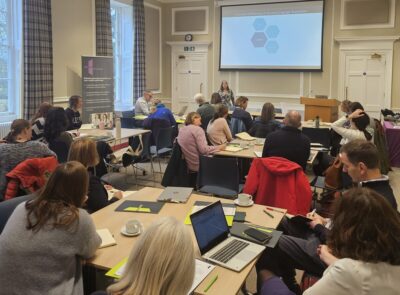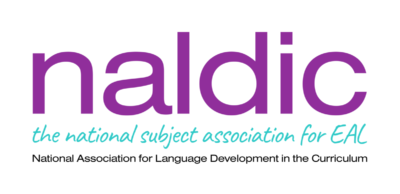 Assessment literacy is Advocacy: Dr Helen Wood, Head of School Partnerships at Password, discusses assessment
Assessment literacy is Advocacy: Dr Helen Wood, Head of School Partnerships at Password, discusses assessment
As EAL practitioners, we know what it means for a learner to progress from beginner to proficient, and we understand the crucial difference between social and academic language. Yet when senior leaders present us with school data—CAT4 scores, InCAS results, or NGRT reading age scores —how often do we question the validity of these measures for multilingual learners?
The uncomfortable truth in many schools is rarely, and that silence has consequences.
Why does it matter?
Multilingual learners now make up an ever-increasing proportion of school cohorts. Yet many assessment systems – from admission screening to baseline tests – still assume a monolingual norm.
Take the Cambridge Insight suite: across InCAS, MidYis to the CEM IBE, the average linguistic demand is B2 on the CEFR, according to CEM’s own mapping. Even so, learners at A1 or A2 are routinely asked to complete these tests. When those students underperform, the danger is that their academic potential is underestimated, when in fact it is the language of the test, not the concepts, that is out of reach.
It may be argued that extracting Verbal Reasoning scores offsets this bias, but as Dr Eowyn Crisfield cautions, “If a learner’s English is limited, no amount of mitigation is going to erase that disadvantage”.
In my own school-based case study of almost 100 multilingual students and over 450 IGCSE entries, CAT4 accurately predicted outcomes in only 18% of cases. Some learners were substantially under- or over-estimated – a distortion I would never have spotted without interrogating the data.
This is why EAL leads must scrutinise how the language demands of assessments shape results. Without this awareness, schools risk misclassifying learners, overestimating gaps and designing interventions that miss the mark, even wrongly attributing bilingual learners with SEND needs (Bedore and Pena, 2008). Avoiding such hazards depends on EAL leaders developing the assessment literacy needed to judge both the tools being used and the data they produce.
The hidden challenge
Research shows that English proficiency is the strongest predictor of academic attainment, with new-to-English learners often needing six years to reach academic fluency (Strand, 2021). During that time, standardised age-related test scores can be misleading, because EAL learners are highly diverse: two pupils of the same age may have entirely different schooling histories (Hutchinson, 2018).
Yet many EAL leads remain unfamiliar with the technicalities of their school’s assessments (linguistic load, norming samples or validity for learners with EAL), leaving a knowledge gap that hinders effective advocacy.
A call to action
As Dr Eowyn Crisfield asks, “if we know the data is not a true reflection of these learners’ ability, the crucial question becomes, how can we interpret it to inform good decision-making?”
Assessment literacy must become a professional priority for EAL practitioners. Ask:
- What exactly does each test measure, and for whom?
- How language-dependent are its subtests?
- What other data should we triangulate before acting?
To contextualise, Crisfield suggests measures of academic English proficiency, such as Password Pupil are used alongside cognitive data. Our multilingual learners need informed critics of the educational systems that measure them.
Assessment literacy is advocacy. It is time we claimed that space!

*Above, Dr Eowyn Crisfield, Director of the Oxford Collaborative for Multilingualism in Education, leads a Password CPD day
References
Bedore, L. M. & Peña, E. D. (2008). Assessment of bilingual children for identification of language impairment: Current findings and implications for practice. International Journal of Bilingual Education and Bilingualism, 11(1), 1–29.
Hutchinson, J. (2018). Educational outcomes of children with English as an additional language. London: Education Policy Institute & The Bell Foundation.
Livermore, R. (April 2025). Mapping of Cambridge Insight assessments to the Common European Framework of Reference for Languages (CEFR). Cambridge help.cem https://help.cem.org/hc/en-gb/articles/14182854921233-Alis-Mapping-of-Cambridge-Insight-assessments-to-the-Common-European-Framework-of-Reference-for-Languages-CEFR
Strand, S. (2021). EAL and proficiency in English: What should we be assessing and how? The EAL Journal, Issue 14, 62–65.
Wood, H. (2025, October). Interview with Eowyn Crisfield: Admissions Testing in Multilingual Settings — Are International Schools Measuring What Matters? International School Magazine, (Autumn 2025), 13. https://www.schoolmanagementplus.com/publications/international-school-magazine/international-school-magazine-autumn-2025/
 Find out more about multilingualism
Find out more about multilingualism
- Join one of our Regional or Special Interest Groups
- Attend the next NALDIC annual conference in November
- Do you have a story to share? Write a post for the NALDIC blog


